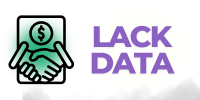In the fast-paced world of B2B sales and marketing, having the right information at your fingertips can make all the difference. But what if you’re just starting out and the jargon of “B2B contact databases” seems overwhelming? Fear not! This beginner’s guide will demystify these powerful tools and show you how they can unlock significant growth for your business.
What Exactly is a B2B Contact Database?
At its core, a B2B (Business-to-Business) contact database is a structured collection of information about potential clients and companies. Think of it as your digital rolodex, but supercharged. Instead of just names and numbers, these databases typically include:
- Company Information: Industry, revenue, buy phone number list employee count, location, website.
- Contact Information: Name, job title, email address, phone number, LinkedIn profile URL.
- Technographic Data: Information about the technologies a company uses (e.g., CRM, marketing automation platforms).
- Intent Data: Signals indicating a company’s interest in a particular product or service.
This rich data allows you to identify, connect with, and nurture relationships with decision-makers at businesses that are most likely to benefit from your offerings.
Why Do You Need a B2B Contact Database? The Benefits for Beginners
For small businesses and startups, investing in a B2B contact database might seem like a big step. However, the benefits far outweigh the initial learning curve:
- Targeted Outreach: No more shooting in the dark! Databases allow you to pinpoint companies and contacts that fit your Ideal Customer Profile (ICP), leading to more effective sales and marketing efforts.
- Increased Efficiency: Say goodbye to manual research. A good at the core of any effective phone marketing database saves you countless hours, freeing up your sales and marketing teams to focus on building relationships and closing deals.
- Scalable Growth: As your business grows, so does your need for new leads. A robust database provides a consistent pipeline of prospects, enabling you to scale your outreach efforts seamlessly.
- Improved Personalization: With detailed insights, you can tailor your messaging to resonate specifically with each prospect’s needs and challenges, significantly boosting your response rates.
- Competitive Advantage: While your competitors are still sifting through public directories, you’ll be actively engaging with qualified leads, putting you a step ahead.
Key Features to Look for in a B2B Contact Database (Beginner-Friendly Checklist)
When you’re ready to explore options, here are some essential features to prioritize:
- Data Accuracy & Freshness: This is paramount. Outdated or incorrect data is useless. Look for providers with strong data verification processes and frequent updates.
- Search & Filtering Capabilities: Can you easily segment by industry, company size, job title, location, or technographics? The more granular, the better.
- Integration with Existing Tools: Does it integrate with your CRM (e.g., HubSpot, Salesforce), email marketing platform, or other sales tools? Seamless integration saves time and improves workflow.
- Ease of Use: As a beginner, opt for a user-friendly interface and intuitive navigation.
- Customer Support: Responsive and helpful customer support can be invaluable when you’re learning the ropes.
- Pricing & Scalability: Choose a plan that fits your budget and allows for growth as your needs evolve.
- Compliance (GDPR, CCPA, etc.): Ensure the provider adheres to relevant data privacy regulations to protect your business.
Getting Started: A Simple Roadmap for Beginners
- Define Your Ideal Customer Profile (ICP): Before you even look at a database, clearly define who your ideal customer is. What industry are they in? How big is their company? What job titles are you targeting?
- Research Database Providers: There are many reputable B2B contact database providers out there (e.g., ZoomInfo, Lusha, Apollo.io, Seamless.AI, Hunter.io). Read reviews, compare features, and check pricing.
- Start Small (Trial Periods): Many providers offer free trials or freemium versions. Take advantage of these to test the waters and see phone number which platform best suits your needs.
- Integrate with Your Workflow: Once you choose a database, integrate it with your existing sales and marketing tools.
- Begin Your Outreach: Start using the data to identify prospects, craft personalized messages, and initiate your outreach campaigns.
- Analyze and Refine: Continuously monitor your results. What’s working? What isn’t? Adjust your targeting and messaging based on your findings.
